Easter Bread
(Paskalya Çöreği)
With its heavenly mahleb smell and fluffy texture, Easter bread will entice you, for sure.
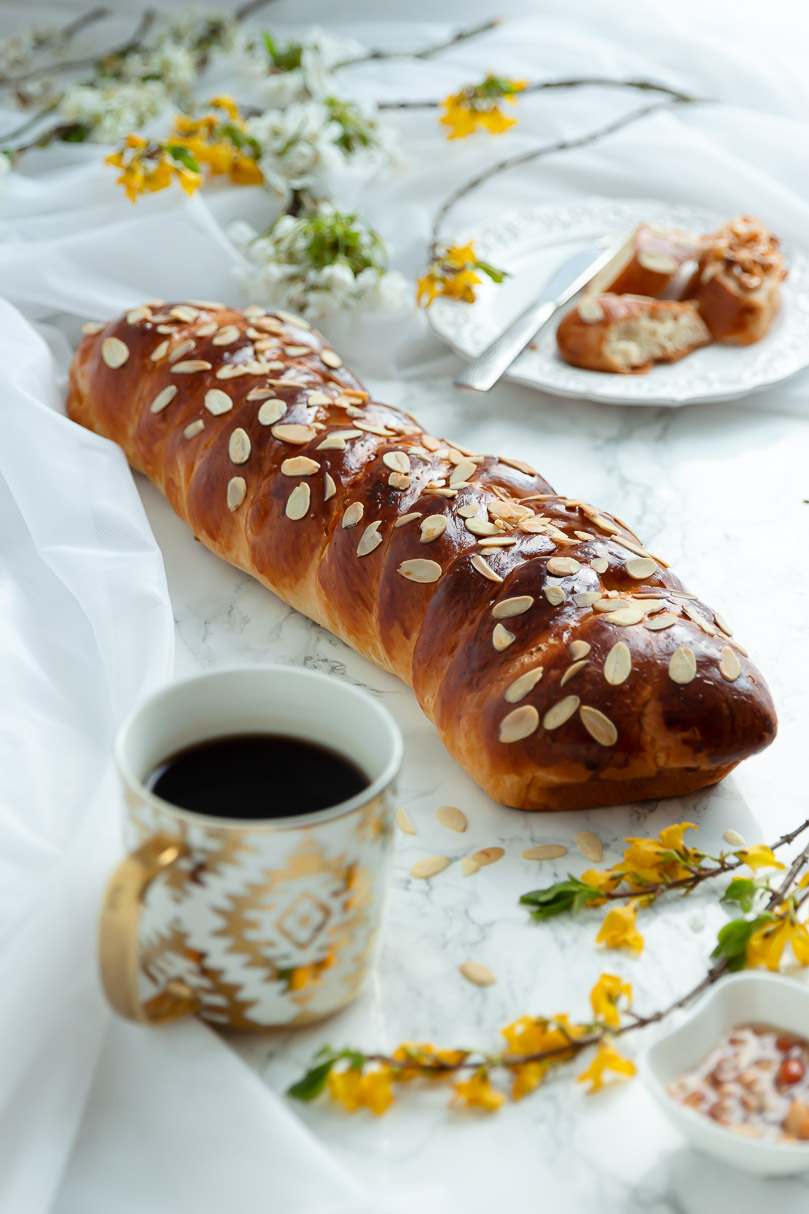
About Easter Bread
It’s nearly time to celebrate Easter. This could mean only one thing. Baking Easter bread. You may say “Hold on! This doesn’t sound very Turkish.” You are right. Well, sort of. Easter bread has been part of Turkish cuisine since the Ottoman Empire thanks to Christian minorities such as the Greeks and Armenians. It used to be customary for Christian families to offer Easter bread to their Muslim neighbours on Easter. Nowadays it is easily available in all of the patisseries and bakeries in Turkey all year long.
MAKES: 1 BIG EASTER BREAD
PREP TIME: 4 HOURS (INCLUDES PROVING TIME)
COOK TIME: 30 MINS
Easter bread’s distinctive smell and taste comes from mahleb, which is a minuscule, almond-shaped kernel found inside the pits of wild cherries. Easter bread’s intense aroma is not the only thing that entices you. Its beautifully braided appearance makes it very attractive too. You can enjoy this sweet bread at breakfast with a jam or chocolate spread, or simply on its own with an afternoon tea or coffee.
In Turkey, women like to gather at each other’s homes once a month. During these gatherings, the host serves a variety of food and gathers money from each visiting lady. The same thing happens the following month in another person’s house. This is an excuse to get together and to eat lots of delicious food in the company of friends. It is also a good way for women to collect large amounts of money in one go! As a child, I used to go along to these gatherings with my mum and sisters. Every time we visited my aunty during these meetings, I remember being mesmerised by the smell of her Easter bread and its well risen, fluffy texture. So, when I decided to write this recipe, there was no better person than her to take my inspiration from. Thanks, Aunty Necmiye.
Even though using yeast might seem scary at first and the long proving time might deter you, I can assure you that Easter bread is very easy to make, and it really is worth the effort and the long wait. From the moment you put the dough into the oven, your house will fill with the delightful smells of mahleb – so you won’t regret it. I hope you give it a try and if you do, I’d love to know what you think of it.
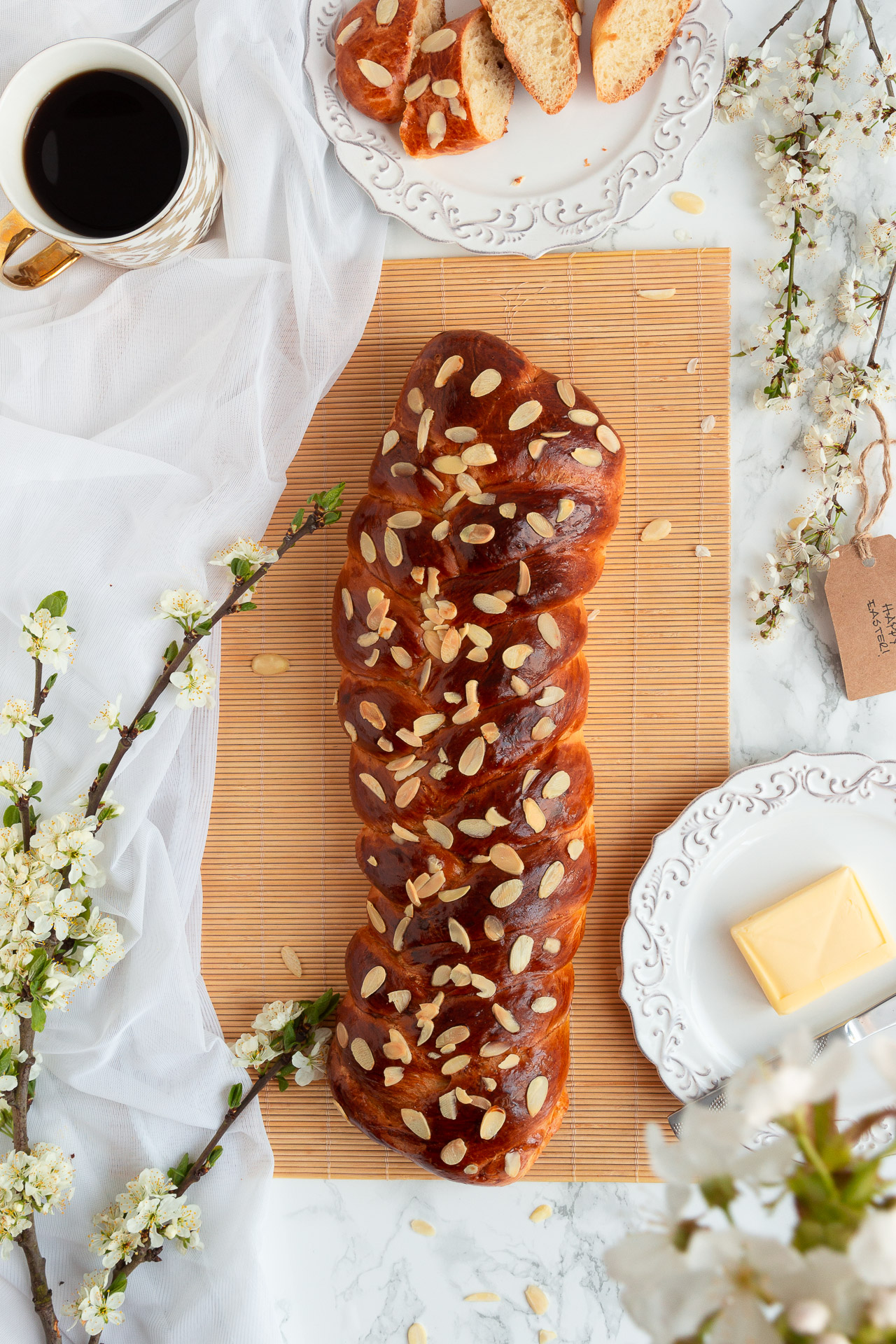
TIPS & SUGGESTIONS FOR MAKING GREAT EASTER BREAD
- Strong bread flour: In most Easter bread recipes, you may find that all-purpose flour is used which has lower gluten content than strong bread flour. In this recipe, I use strong bread flour which has a higher gluten content and lets the dough rise much more making the texture fluffier, a bit chewier and more elastic. If you would like your bread to be compact with a cake-like consistency then you can substitute bread flour with all-purpose flour.
- Mahleb: The distinctive taste of this bread comes from mahleb, so it is a must. Mahleb is available online as well as in Turkish and Middle Eastern shops.
- The temperature of your ingredients: Eggs and melted butter should be at room temperature. The milk should be lukewarm. When you dip your little finger in milk if it feels slightly warmer than your body temperature then it’s lukewarm.
- Activating yeast: While activating the yeast, the water needs to be lukewarm. If it is cold, it will take a very long time to activate. If it’s too hot, it will kill the yeast. So, you have to pay attention to the water temperature very closely. When you dip your finger in the water, it should feel slightly warmer than your body temperature.
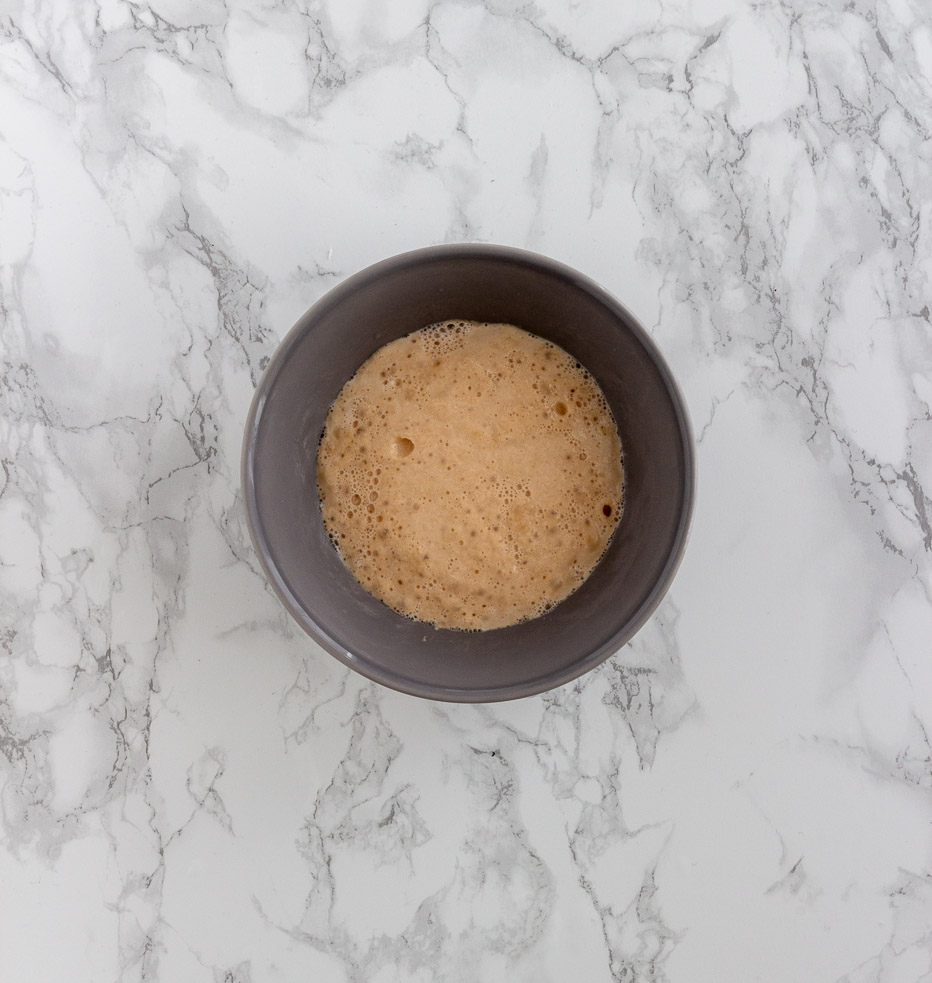
- Salt: Avoid adding the salt directly to the yeast mix. Because this will kill the yeast.
- The texture of the dough: At the beginning, the dough will be flabby and sticky. But it will turn smooth and shiny as you knead it. It will still be a little clingy but won’t stick to the sides of the bowl as much. This process takes about 15 minutes with a free-standing electric mixer. If you are kneading by hand, it may take longer. The texture of the dough should be your guide.
- Proving: Do not skip! This is one of the steps which the success of your bread depends on. The optimum ambient temperature for rising a bread dough is 22°C, away from draughts. Especially during wintertime, it can be difficult to get a consistent, warm place for proving. That’s why I tend to preheat the oven at 60°C (140°F) first, then turn off and place the well-wrapped dough in the oven for proving. The dough should double in size in a couple of hours. If your oven’s temperature doesn’t go as low as 60°C (140°F), you can preheat the oven at the lowest temperature possible, turn it off and let it cool a bit before you put the dough inside.
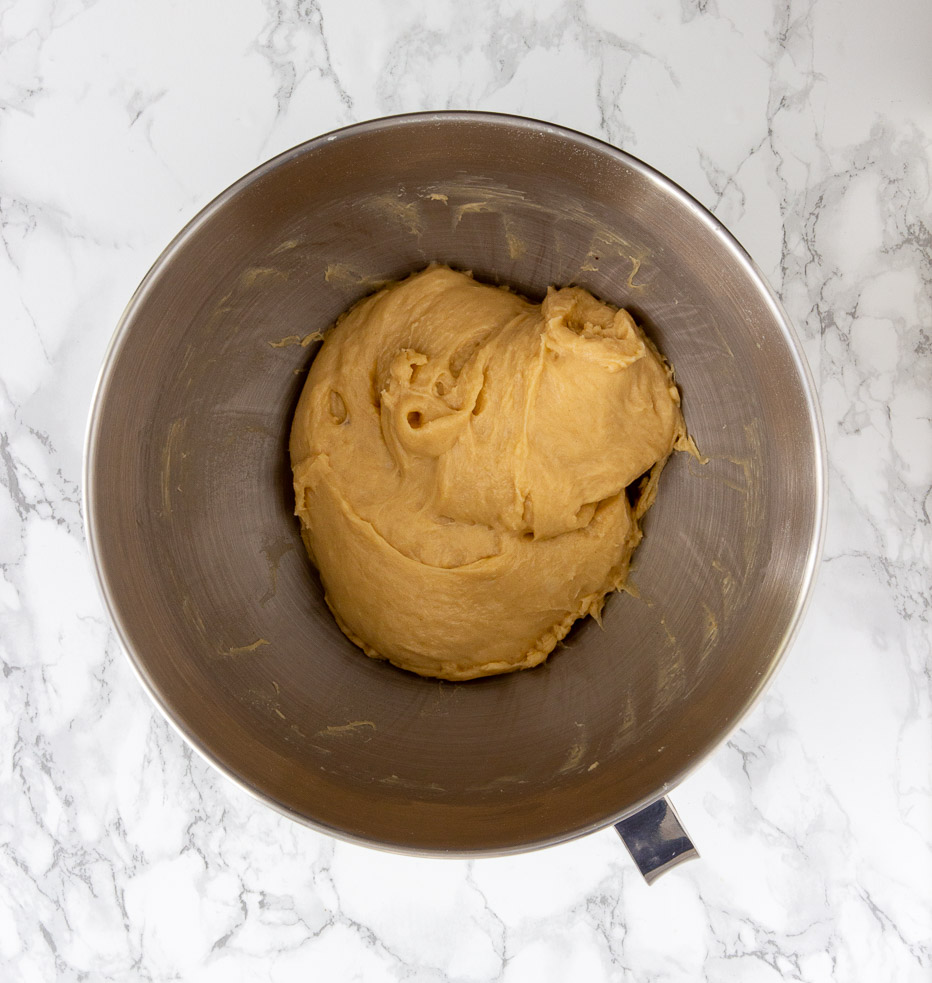
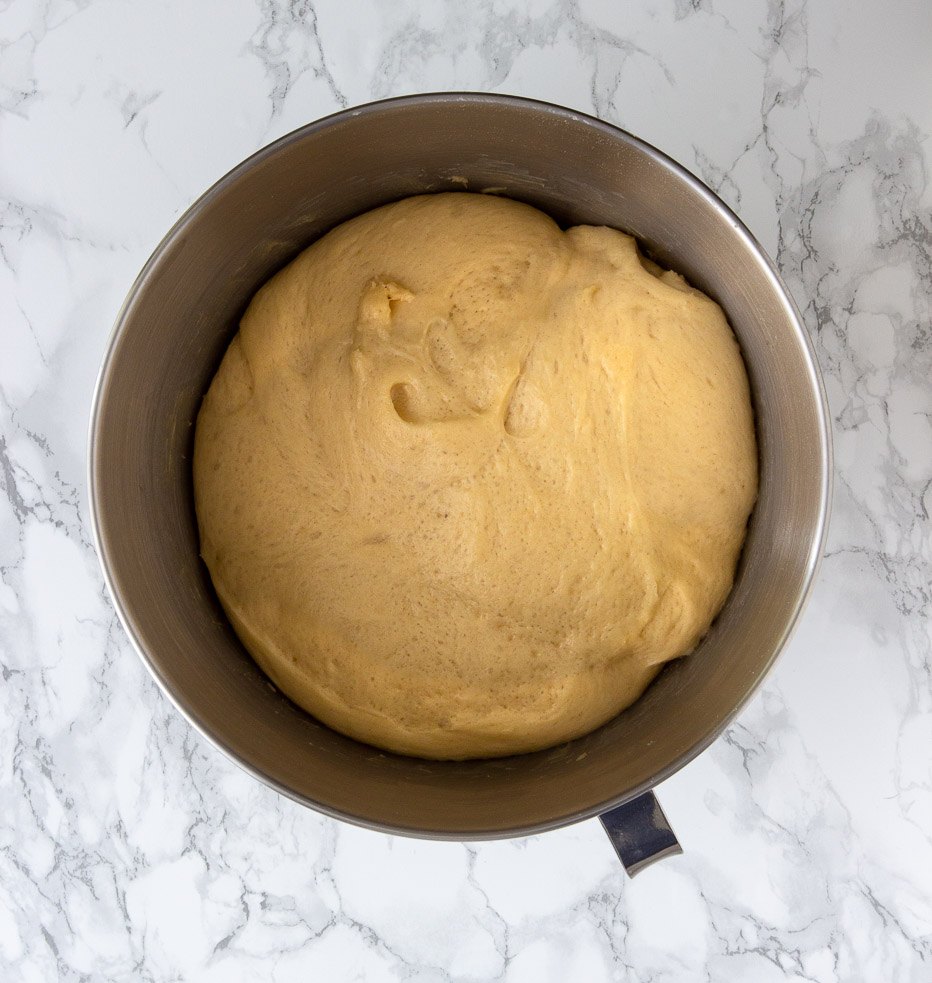
- Poke test: After proving, to test your dough’s readiness, poke it gently but assertively. If the dough springs back right away, let it rise for a few more minutes. If the dough springs back slowly and your finger leaves a small indentation, it’s ready to go.
- The shape of the bread: Even though traditionally Easter bread has a braided shape if you wish you can shape it differently.
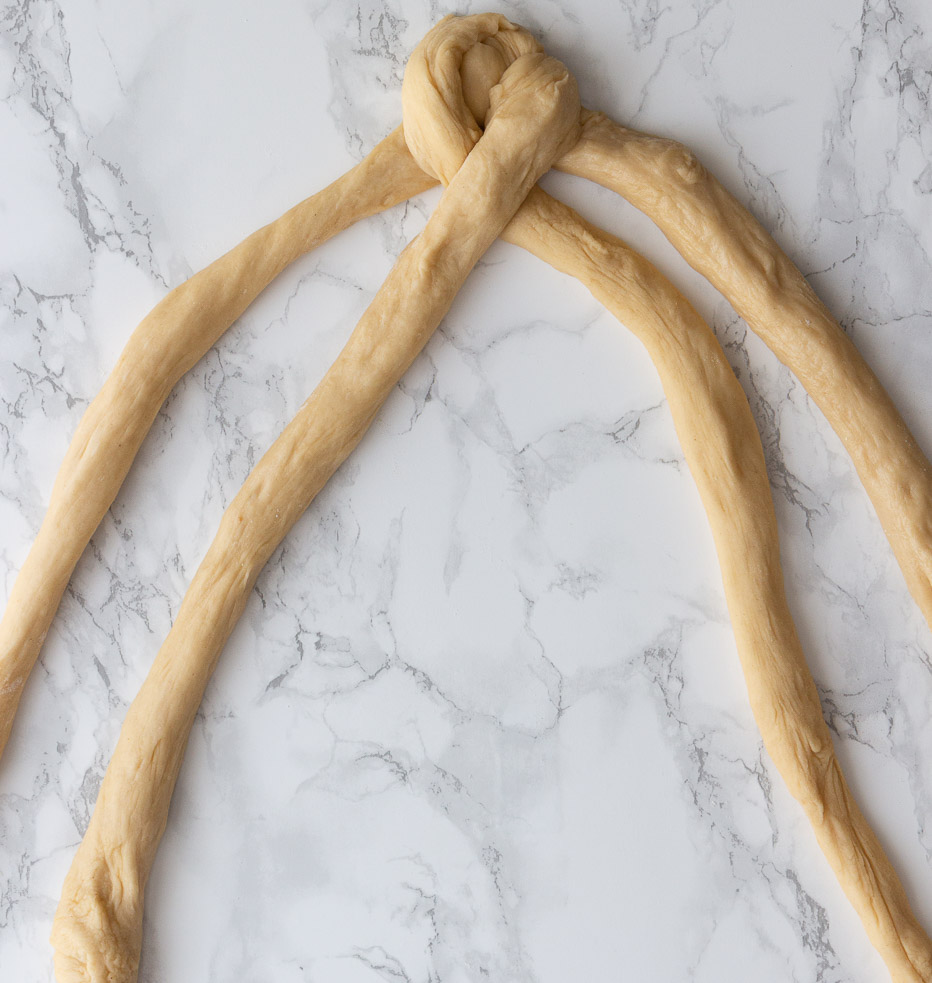
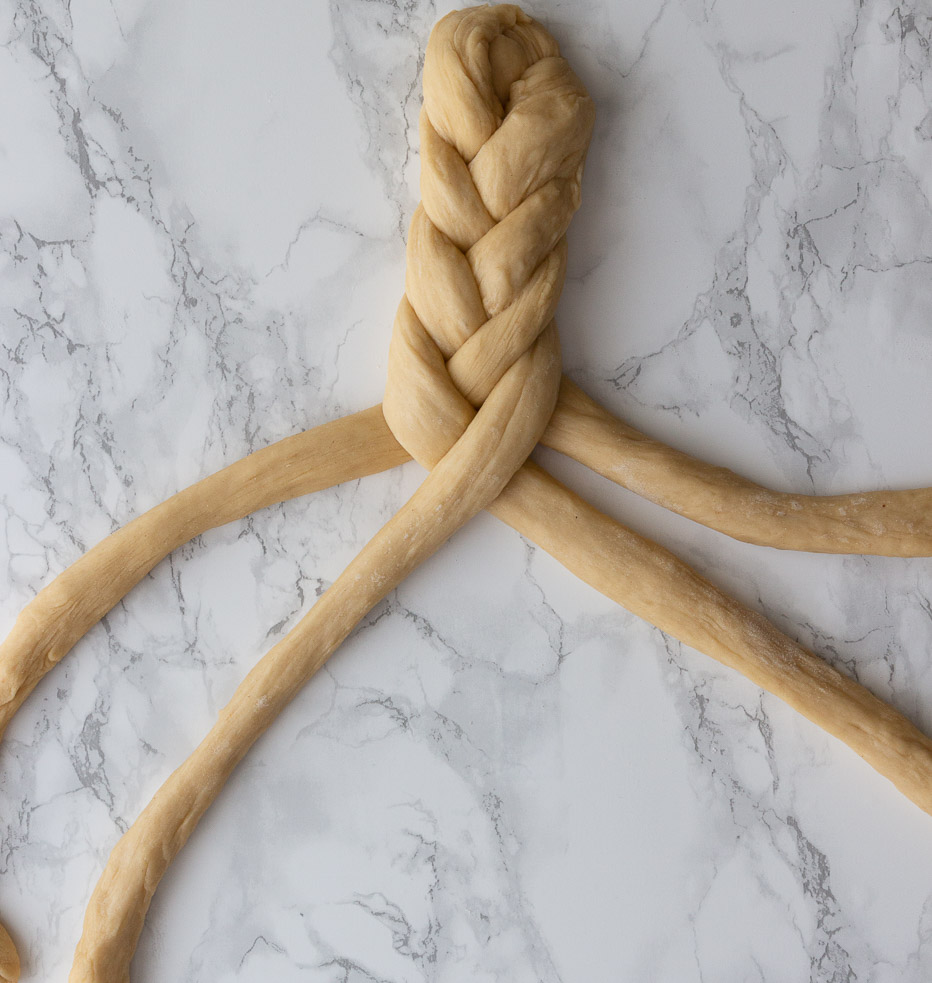
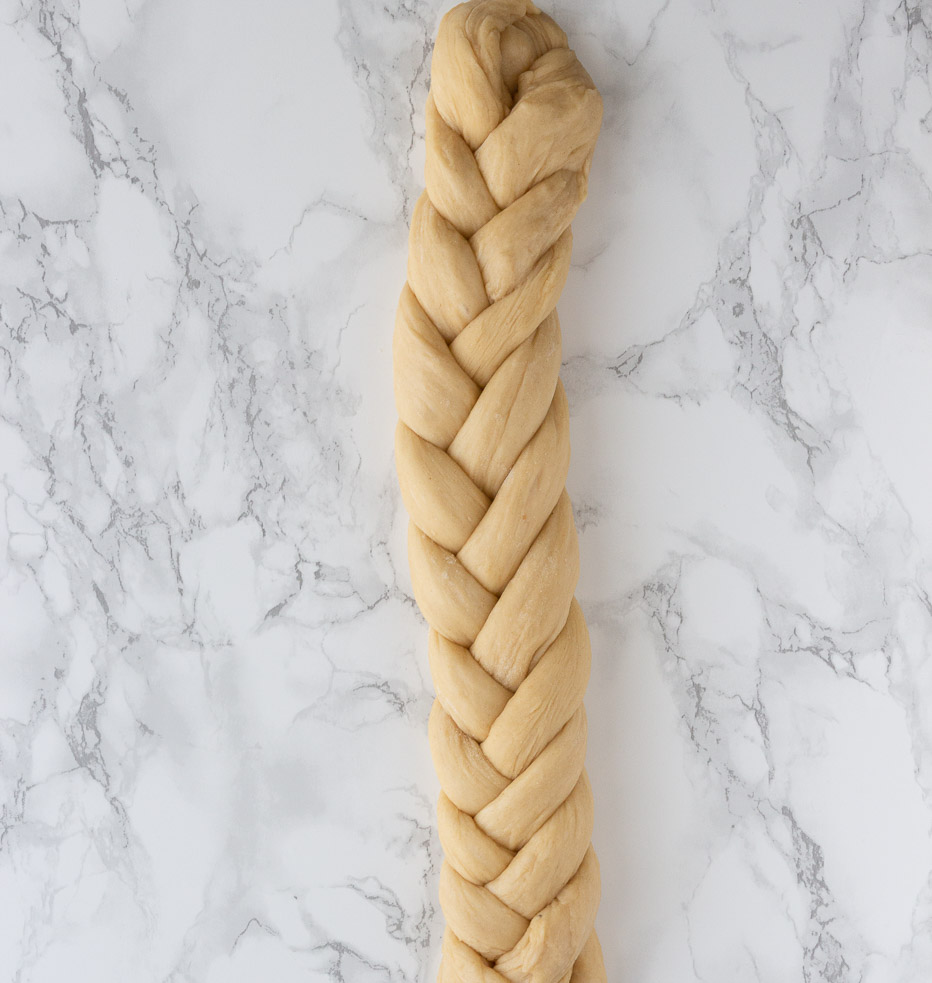
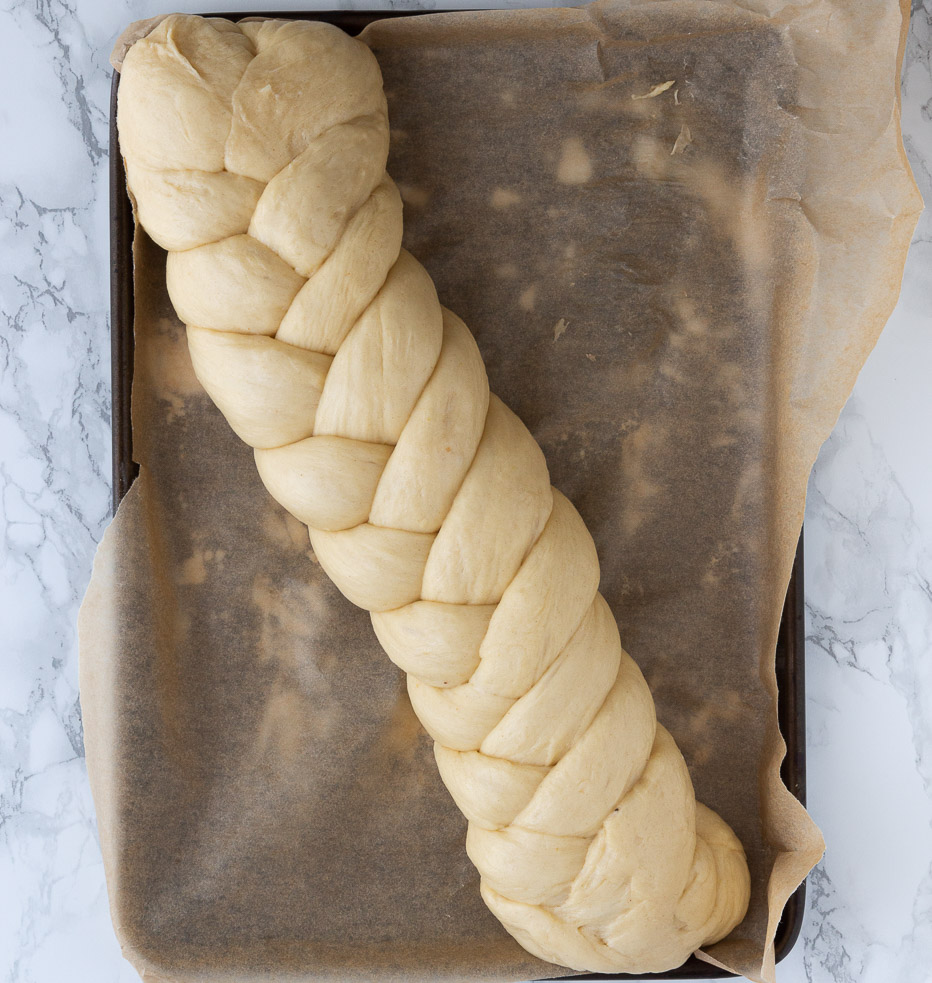
- Topping: I decorate the bread with almond slivers but garnishing with chopped hazelnuts is also quite common in Turkey. The choice is yours.
- Extra flavours: In my recipe I only use mahleb. For an extra flavour, you can add ground mastic and orange zest to it.
- Leftover: Leftover Easter bread is perfect for French toast.
Ingredients
- 40 ml (8 tsp) water, lukewarm
- 1 pack (7 g) active dry yeast
- 85 g (7 tbsp) white granulated sugar
- 45 ml (3 tbsp) milk, lukewarm
- 45 g (3 tbsp) melted butter, at room temperature
- 2 eggs, at room temperature, lightly beaten
- 300 g (2 cups) bread flour, sifted
- 1/4 tsp ground mahleb (see note)
- Pinch of salt
For Glazing & Topping
- 1/2 tbsp milk
- 1 egg yolk
- Almond slivers to garnish
Step by Step Instructions
Step 1
Add active dry yeast to a bowl of lukewarm water along with 1 tsp sugar. Mix it well and after covering it with a cling film leave it for 15 minutes in a warm place. If the yeast has foamed up and risen slightly then you’re good to go.
Step 2
In the meantime, add lukewarm milk, the rest of the sugar and lightly beaten eggs to the lukewarm melted butter and blend them well.
Step 3
Once the yeast is activated, combine the yeast mixture with the butter mixture.
Step 4
Sift the flour in your mixer bowl. Add the mahleb and salt to it and combine them well. Create a well in the centre of the flour and pour in the liquid ingredients. With the help of a dough whisk, mix all the ingredients to form a scraggy dough at the lowest speed of your stand mixer. If you don’t own a stand mixer, mix the ingredients with a wooden spoon or a silicone spatula until a rough dough comes together.
Step 5
After attaching the dough hook, start kneading the dough at medium speed for about 10-15 minutes until the dough doesn’t stick to the sides as much. It should look smooth and satiny. If you are kneading by hand, you need to transfer the dough on to a floured work surface and knead until you get the right consistency which is soft and slightly sticky. While kneading resist the temptation of adding more flour. Once it’s ready, lift the dough into a clean bowl.
Step 6
First proving: Cover the mixing bowl with a cling film. Wrap it with a towel or blanket and leave to rise in a warm place. Alternatively preheat your oven at 60°C (140°F) and turn it off. Then place your well-wrapped dough bowl in the oven. Leave it without disturbing for 2-3 hours until it doubles its size.
Step 7
Flour your work surface and your hands lightly. Remove the risen dough from the bowl and knock it back on your work surface, kneading for 2-3 minutes.
Step 8
Divide the dough into 4 equal parts and shape them into equal length round strips by rolling and stretching with the palm of your hands.
Step 9
Connect the 4 ends on one side and make a braid.
Step 10
Move your braided dough to a baking tray lined with baking paper. To prove it for the second time, cover it with a towel and allow it to rise for an hour in a warm corner of your house or in the oven. It should double its size.
Step 11
Preheat the oven to 160°C (325°F, gas mark 3). In the meantime, prepare an egg wash by mixing an egg yolk with milk. Brush the top of your dough with the egg wash and garnish it with almond slivers.
Step 12
Bake it at 160°C (325°F, gas mark 3) for 30 minutes.
Step 13
Once it’s baked, remove it from the oven, allow it to cool on a wire rack and serve.
Step 14
To keep your Easter bread fresh, wrap it with cling film and keep it at room temperature.
Goes Well With
Turkish Tea
Coffee
Chocolate Spread
Honey
Jam
Butter
Notes
Mahleb: It’s available online as well as in Turkish and Middle Eastern shops.
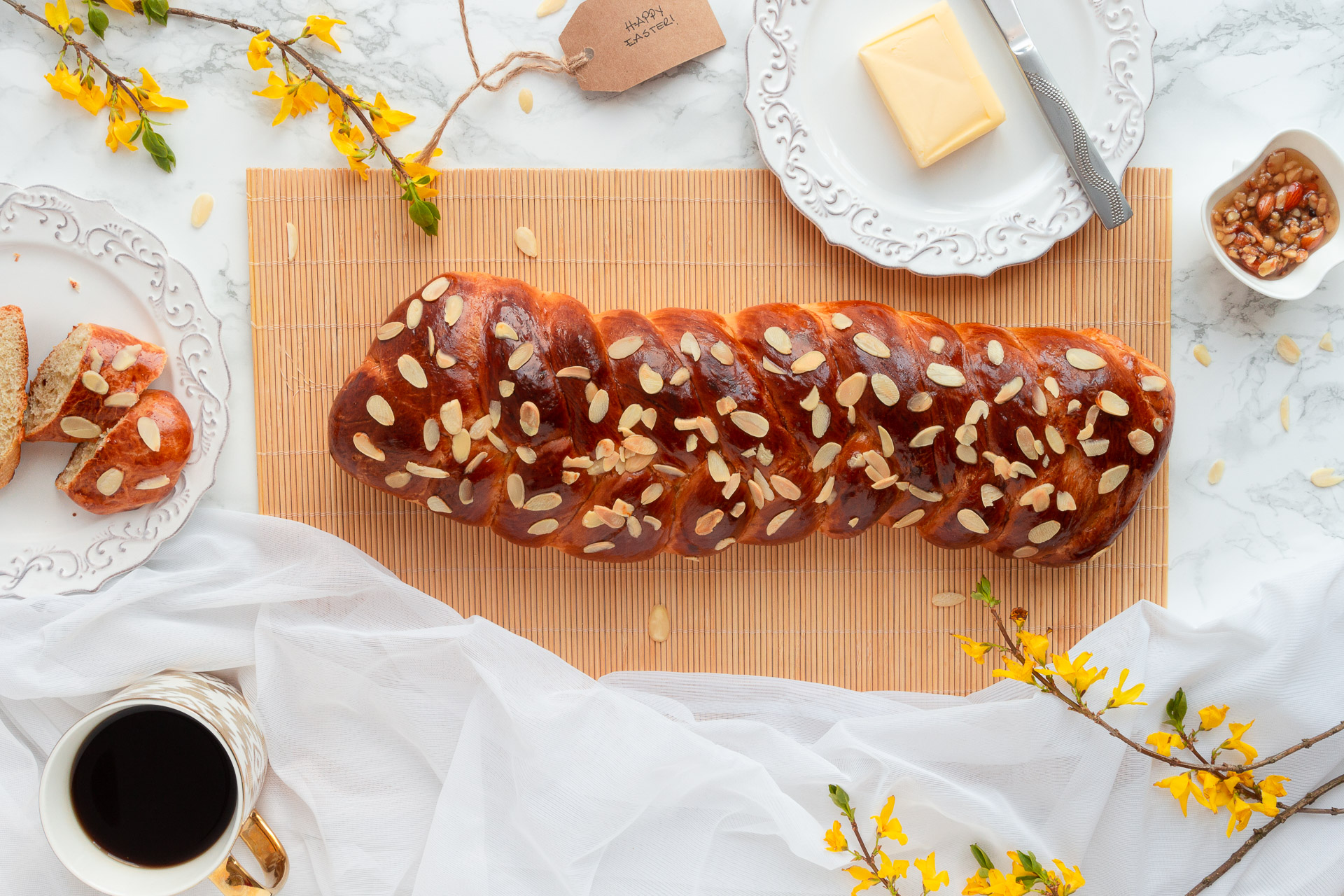
Love This Recipe? Share It With Your Friends!
You May Also Like
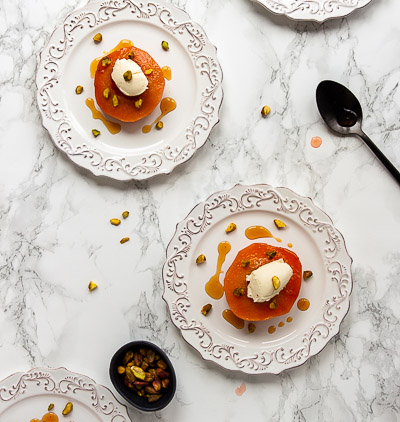
Poached Quince
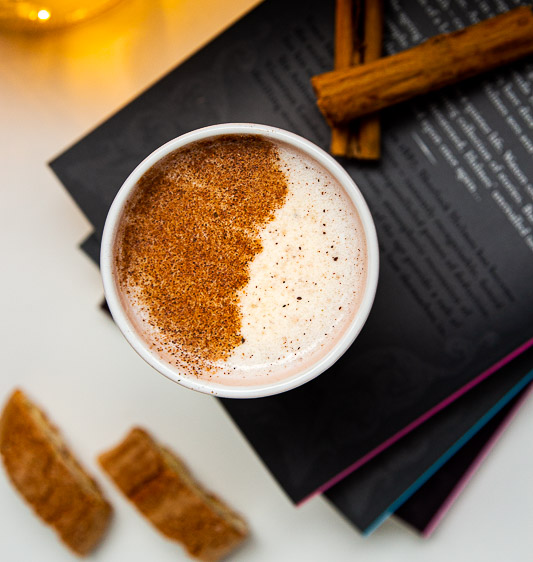
Salep
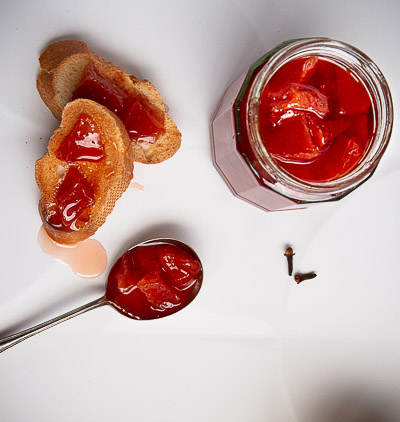

Elleine sağlık canım 👏 👏
Çok teşekkürler.
Hepsi birbirinden güzel olmuş.Ellerine emeğine sağlık.
Çok teşekkürler. Çok incesiniz.
Wow, this Easter bread is amazing!! I made it at Easter for the first time and it was a great success! My family loved it and has been asking for it ever since. It is so delicious, I wouldn’t change a thing. It is very soft inside and crispy on the outside, plus it is easy to make!! Will be making it again and again! Thank you for sharing this lovely recipe.
What a beautiful comment. I am so glad you enjoyed it. It made me happy. Thank you so much.